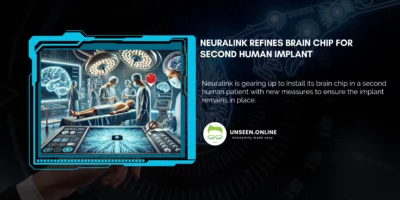In a significant advancement in neural technology, Elon Musk’s Neuralink has achieved a milestone by successfully implanting its N1 chip in a human patient. This breakthrough marks the first time Neuralink’s brain implant has been tested in humans, heralding a new era in medical technology.
The N1 chip, roughly the size of a coin, is equipped with 64 threads containing 1,024 electrodes. This design allows for precise reading of brain activity. Despite its complexity, the chip is designed to be cosmetically invisible after surgical installation, integrating seamlessly with the human body.
The primary function of the implant is to interpret neural activity as commands for electronic devices. By detecting neuron spikes in the brain, the technology translates these signals into actions, enabling users to control devices like computers and smartphones simply through thought. This innovation promises to revolutionize how we interact with technology, making it more accessible, especially for individuals with mobility impairments.
Neuralink’s initial focus is on aiding those who have lost the use of their limbs. The technology aims to enhance communication capabilities, potentially allowing users to convey thoughts and commands faster than ever before. This aspect of the technology is not just a scientific achievement but also a beacon of hope for improving the quality of life for many.
As Neuralink embarks on its PRIME study, which is expected to span six years, the world watches with anticipation. The successful implementation of this brain implant could pave the way for extraordinary advancements in how we interact with our environment and assist those in need of innovative communication and control methods. The journey of Neuralink’s N1 chip from conception to human trials underscores the rapid progress in the field of neural technology, promising a future where the boundaries between human cognition and digital control blur, opening up a realm of possibilities previously confined to the realm of science fiction.







